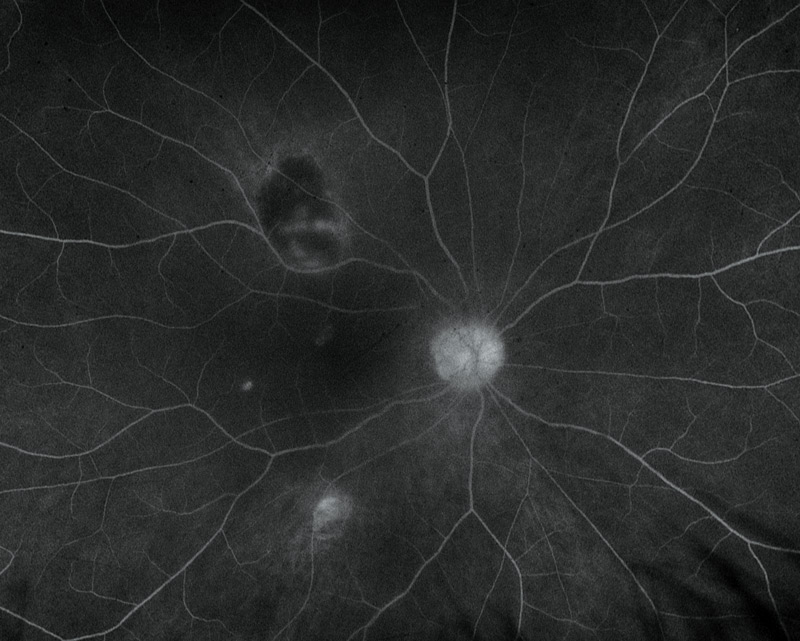Fluorescein angiography is an imaging test to view the blood vessels in your retina. The retina is the layer of eye tissue that sends visual information to your brain. You may have fluorescein angiography to diagnose or monitor an eye disease that affects your retina.
Advertisement
Cleveland Clinic is a non-profit academic medical center. Advertising on our site helps support our mission. We do not endorse non-Cleveland Clinic products or services. Policy

Fluorescein angiography is a test to take pictures of the layer of tissue in the back of your eye (retina). Your retina sends images to your brain so you can see.
Advertisement
Cleveland Clinic is a non-profit academic medical center. Advertising on our site helps support our mission. We do not endorse non-Cleveland Clinic products or services. Policy
During the test, your provider gives you eye drops that widen (dilate) your pupils. Your provider also injects a dye called fluorescein through a vein in your arm. This fluorescent dye travels to the blood vessels in your eye. The dye highlights the blood vessels and allows your provider to see them clearly so they can screen or look for conditions that might impact your vision.
Your healthcare provider uses fluorescein angiography to diagnose or monitor eye conditions that affect the blood vessels in your retina, such as:
Advertisement
A healthcare provider specializing in eye diseases (ophthalmologist) performs fluorescein angiography.
Before the test, you’ll need to arrange transportation to and from the test. Dilating your pupils can affect your vision for up to 12 hours, so you won’t be able to drive yourself home.
Your healthcare provider will review all of your medications with you before your appointment. You may need to stop taking certain medicines temporarily.
Tell your healthcare provider if you have any allergies, especially allergies to iodine. Also, tell your healthcare provider if you’re pregnant or think you could be. Doctors don’t know yet how fluorescein angiography could affect a developing fetus.
You usually have fluorescein angiography in your provider’s office. On the day of the test, remove contact lenses if you wear them. During the test, your provider:
Fluorescein angiography is a quick test. It usually takes fewer than 30 minutes.
You can return home the same day as fluorescein angiography. Although most people don’t feel much during the test, after the test, you’ll have to take some precautions for a few hours. After fluorescein angiography, it’s common to have:
Fluorescein angiography is low risk for most people. Rarely, some people have an allergic reaction to the dye and may develop hives or itching.
Some people are sensitive to fluorescein and may have:
Side effects are common and may include:
Your ophthalmologist will discuss the test results with you within a few days. If the test showed blockages or leaks in your blood vessels, it could point to a health condition such as diabetes-related retinopathy or macular degeneration. Your provider may order more tests for diagnosis.
Advertisement
Call your healthcare provider if you experience any symptoms of an allergic reaction.
Rarely, allergic reactions can cause breathing problems or other life-threatening complications, including anaphylaxis. If you experience symptoms that affect your breathing, call 911 or go to your nearest emergency center.
Fluorescein angiography might cause uncomfortable side effects, but it shouldn’t be painful. Tell your healthcare provider if you experience any pain during the test.
Fluorescein angiography is a test to look at your retina. It uses a contrast dye to highlight your blood vessels. Eye specialists use fluorescein angiography to diagnose or monitor eye diseases, such as diabetes-related retinopathy or macular degeneration. Fluorescein angiography is a safe test but may cause side effects such as blurred vision.
Advertisement
Your eyes are one of your most important senses. If something goes wrong, it can change your world. Cleveland Clinic can help treat all types of retinal disease.

Last reviewed on 12/27/2022.
Learn more about the Health Library and our editorial process.